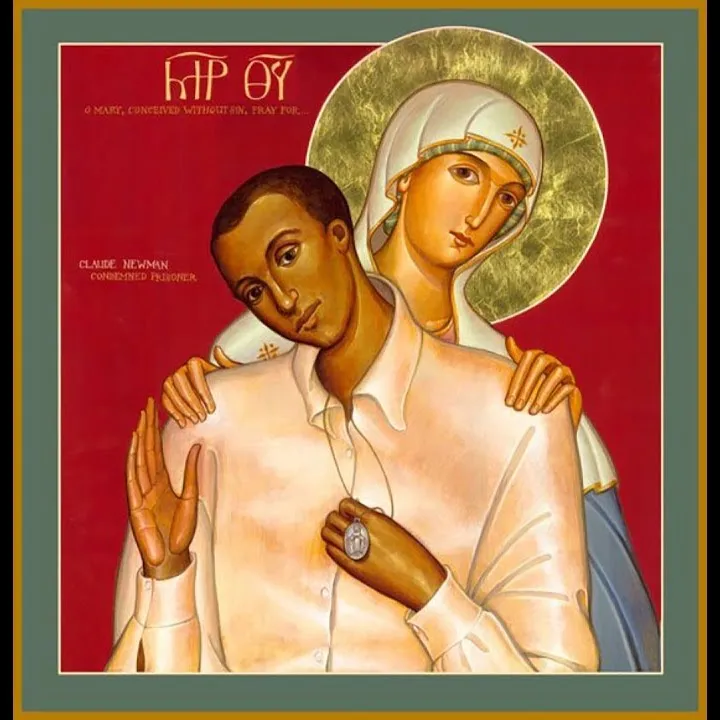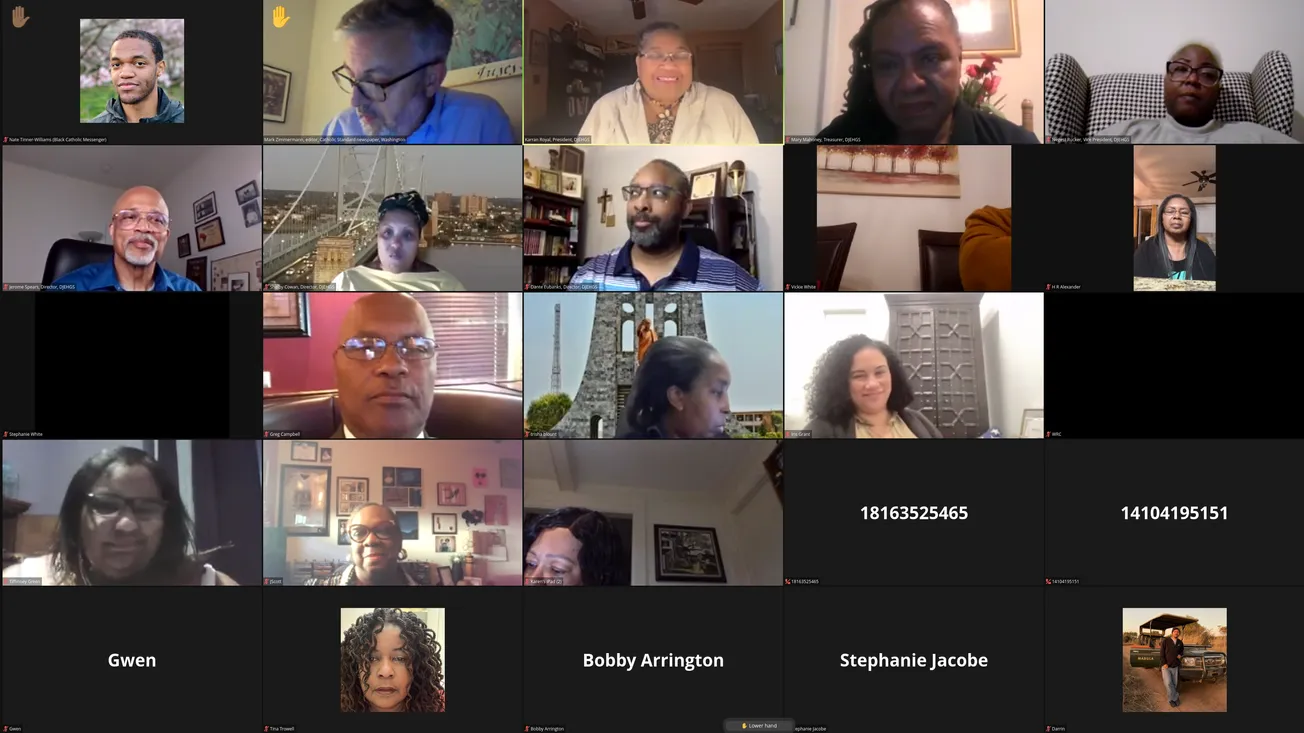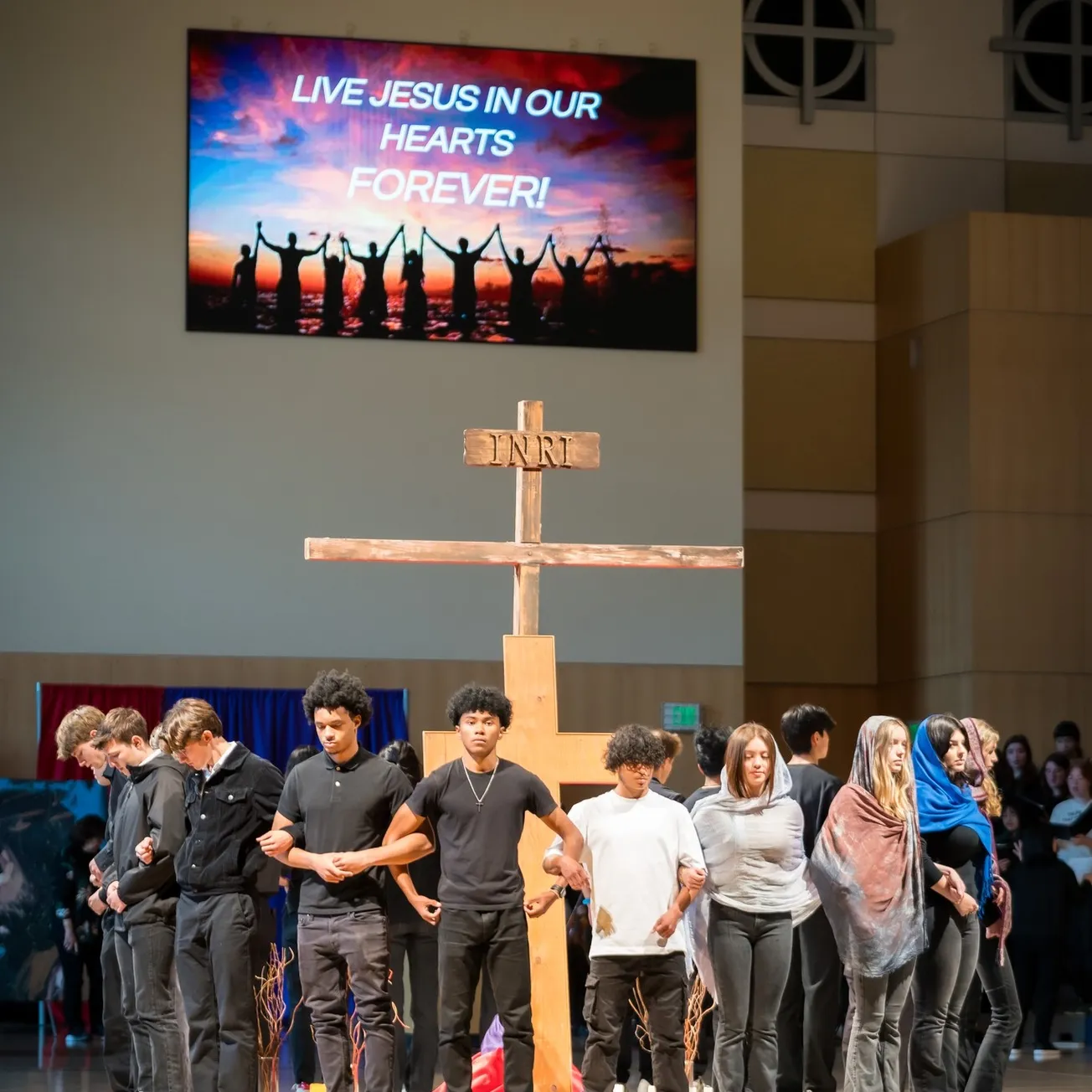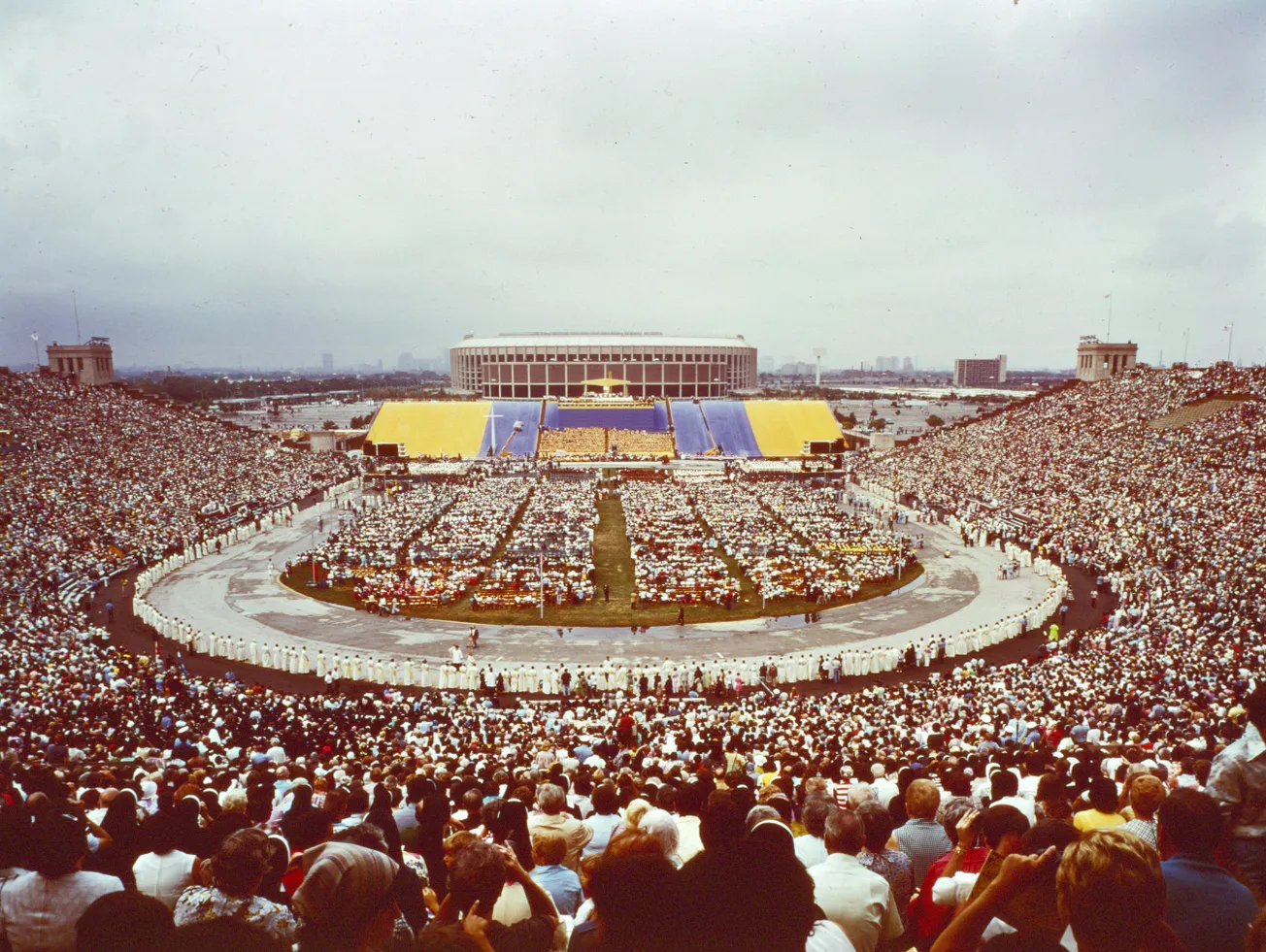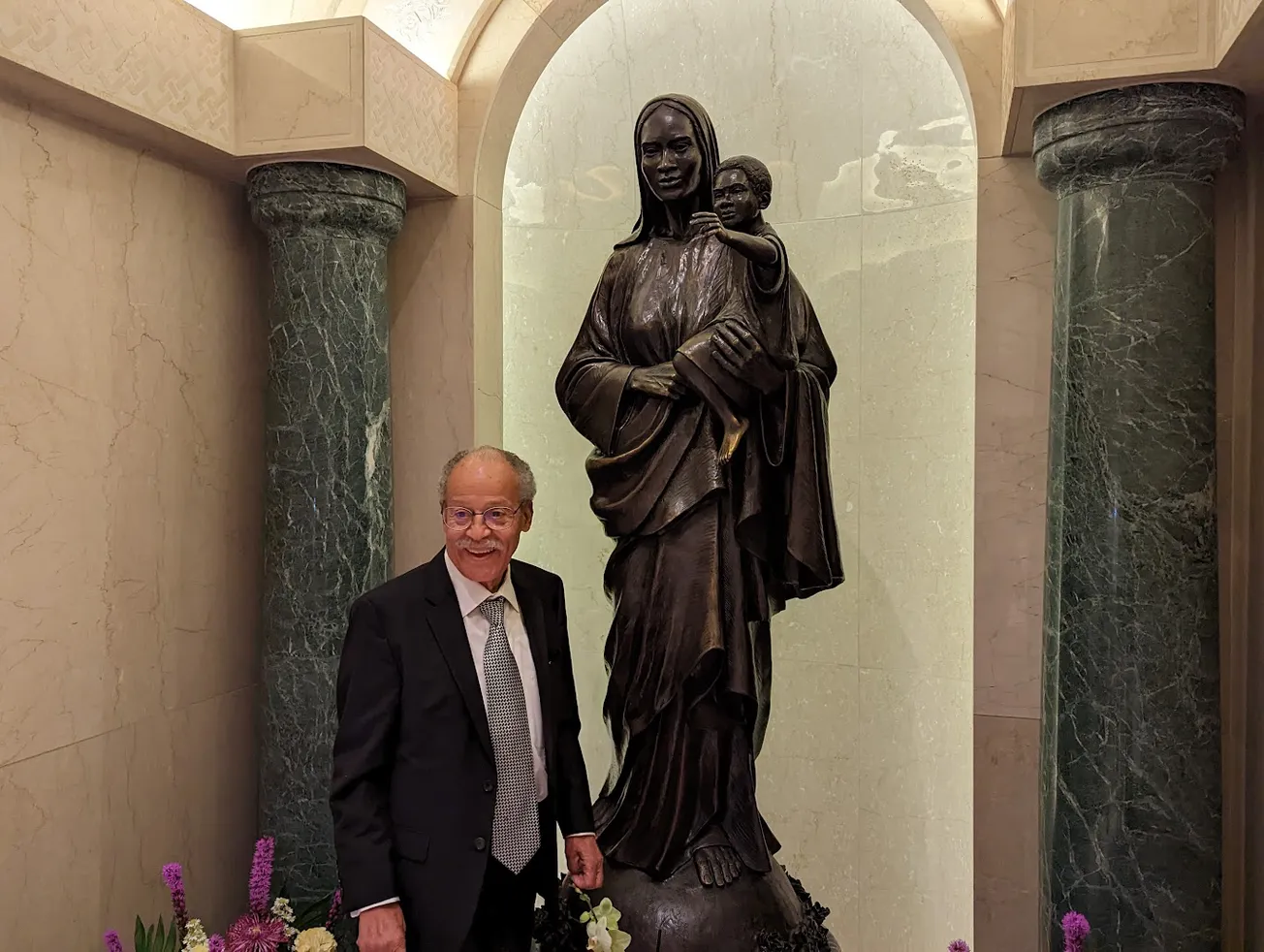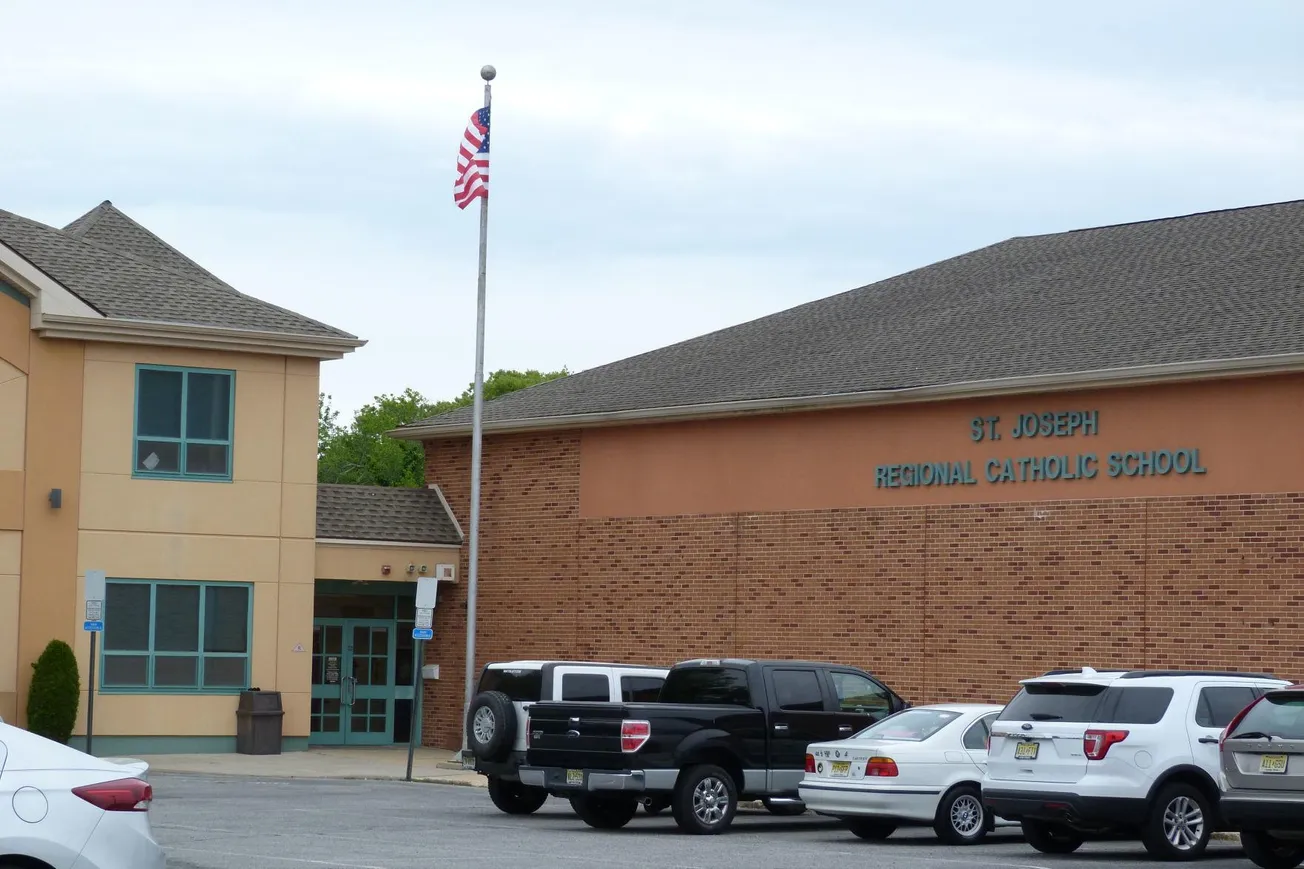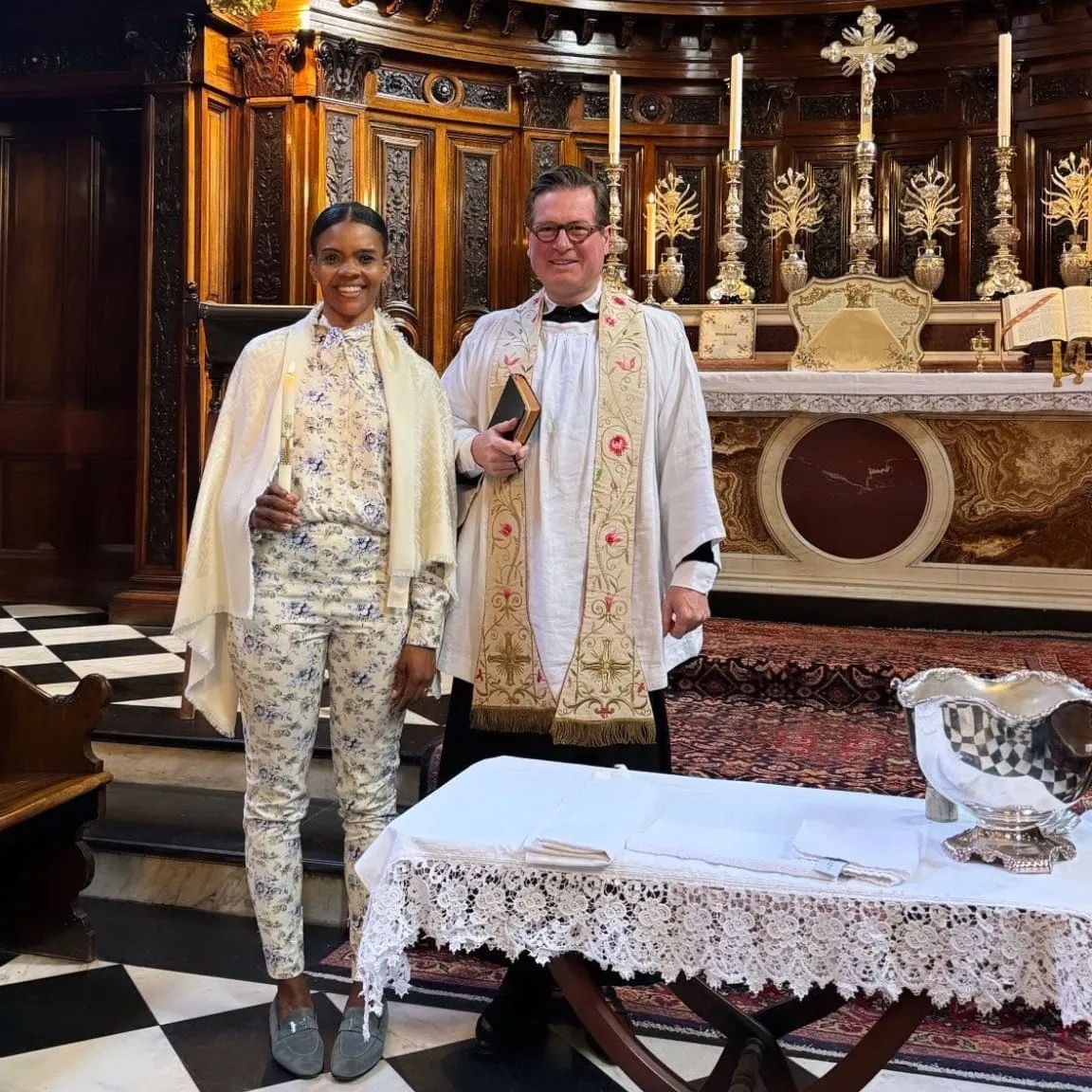November 30 marked the end of Black Catholic History Month as well as the annual Cities for Life Day, commemorating the date in 1786 that the Grand Duchy of Tuscany, under the reign of future Holy Roman Emperor Leopold II, became the world's first civil state to abolish capital punishment.
Today, December 1, marks a day connected to both: the 99th birth anniversary of Claude Newman, an African American said to be the source of the nation’s only Black Catholic Marian apparition. It was reported to have occurred shortly before his execution by the state of Mississippi in February 1944. He was only 20 years old.
Born to Willie and Floretta Young Newman in 1923, Claude was a native of Stuttgart, Arkansas, a small town with a significant Black population due to former slaveholding. Even in Claude’s day, most of his community still worked on plantations, likely in the pseudo-slavery of sharecropping.
Newman was raised as a Protestant by his grandmother Ellen in Bovina, Mississippi, several hours south of his hometown. The elder Ms. Newman would later marry an abusive man, Sid Cook, who is said to have first brought on in Newman a somewhat violent streak. He did not, however, immediately act on his protective instincts.
According to the popular narrative, in 1940, Claude married and found work on another former slave field and for a short while led a relatively quiet life. Two years later, that all changed, leading to the events that would land him in the history books.
In 1942, 80 years ago this month and just after Claude’s 19th birthday, he traveled to the home of Cook—by then separated from Newman's grandmother—and shot him in cold blood. He was also alleged to have stolen money from Cook’s home thereafter, before fleeing back to his hometown to hide out at his mother’s home.
The next month, Newman was arrested and extradited to Vicksburg, Mississippi, just west of the capital of Jackson and the site of various lynchings in previous decades. Unsurprisingly, his alleged confession to the Cook killing was said to have been coerced, but he was quickly convicted and sentenced to die by the electric chair—then a new method of execution in Mississippi.
Newman would remain on death row for roughly a year, where he shared a cellmate with a man who, by all appearances, was a Catholic. One visual notice in particular was a medallion he wore around his neck: a Miraculous Medal, associated with a then century-old French apparition to St. Catherine Labouré.
Apparently disinterested in the meaning behind the medal, the inmate—when questioned about it by Newman on May 19, 1944—reacted with disgust and gave it to Newman, who began wearing it. It is said that, beginning that night, he received visions of the Blessed Virgin Mary.
“If you would like me to be your Mother, and you would like to be my child, send for a priest of the Catholic Church,” she purportedly told him, leading to his first encounter with Fr Robert O’Leary, SVD, a member of the Divine Word Missionaries.
At the very least, Newman was converted to the Catholic faith. Some versions of the story say his four cellmates were as well, in addition to the reversion of ex-Catholic James Hughes, a prisoner who had a particular dislike for Newman but was visited by the Blessed Virgin and Newman himself in an apparition just before his own execution.
Additionally, it is said that Newman was catechized by the Blessed Virgin in the apparitions, leading to a number of miraculous encounters with O’Leary and a group of religious sisters brought in to teach him and his cellmates the Catholic faith. O’Leary, before his death in 1984, also claimed that Mary informed Newman of a secret vow the priest had made years prior, to build a church dedicated to the Immaculate Conception.
In any case, the unquestionable facts seem to be that Newman was indeed brought into the Church in January 1944 by Fr O’Leary (with the baptismal name “Jude”), as was a fellow inmate in Mildred “Josephine” Johnson. Both were sponsored by Missionary Sisters Servants of the Holy Spirit, members in the sister congregation of the Divine Word Missionaries.
The names of Newman and Johnson are duly recorded in the sacramental records of St. Mary’s Catholic Church in Vicksburg, a Black parish that received historical markers earlier this year. The prospective church of which Newman reminded O’Leary is also now very real: Immaculate Conception Catholic Church in Clarksdale.
For his part, Newman was executed for murder by the state of Mississippi on February 4, 1944, with relatively little fanfare. He was buried at Beulah Cemetery in Vickburg, but his specific gravesite is presently unknown.
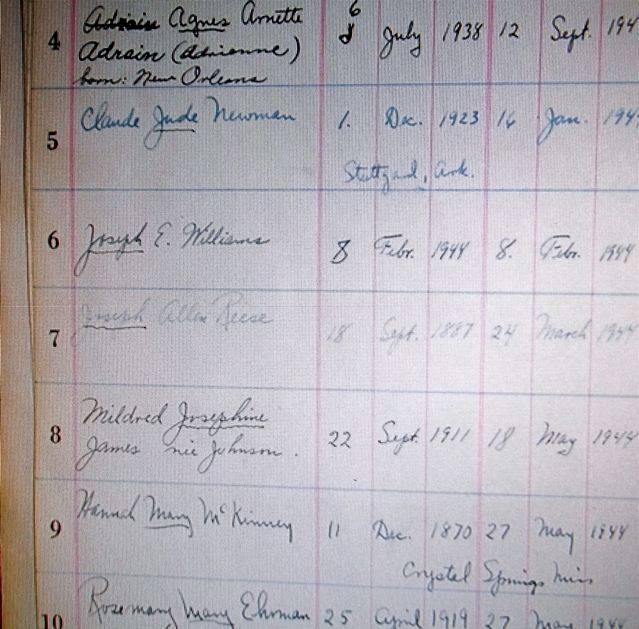
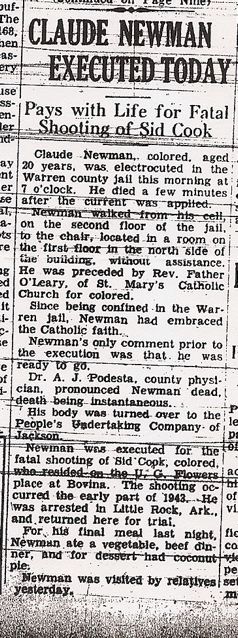
In his afterlife, and at the behest of Fr O’Leary, Newman has become the subject of a number of popular retellings. They are various in their details and often embellished—some say Newman killed Cook to prevent a rape—but the core fascination remains settled on a poor Black man, righteously angered by a wicked abuser and sentenced to death for murder, before becoming Catholic due to a Miraculous Medal and a Marian apparition.
To be sure, even tame versions of the tale are shocking to the American mind, which would scarcely think of Black Catholics at all, especially in the heavily Baptist regions of the Deep South. What is one to make, then, of a convert on death row influenced by an unconfirmed miracle?
In addition to one recently passed Black Catholic priest, Fr Malcolm O’Leary, SVD—no relation to Robert—Br Claude Lane, OSB of Mount Angel Abbey in Oregon has helped popularize Newman’s story in the 21st century, creating a series of striking icons depicting Newman alongside the Blessed Virgin Mary.
Another Pacific Northwesterner and student of Lane, Fr Michael Shrum, OSB in Washington state, completed another such icon of Newman in 2020, adding a third figure in St. Jude—the patron of Newman, and of lost causes and desperate situations.
Several popular-level books on Catholic miracles have also picked up on the Newman story, as have any number of Catholic blogs and even EWTN’s National Catholic Register newspaper in 2016.
He has also been the subject of at least one theatrical play, Cathal Gallagher “Claude Newman: A Miracle on Death Row,” staged in 2012 by G. K. Chesterton Entertainment.

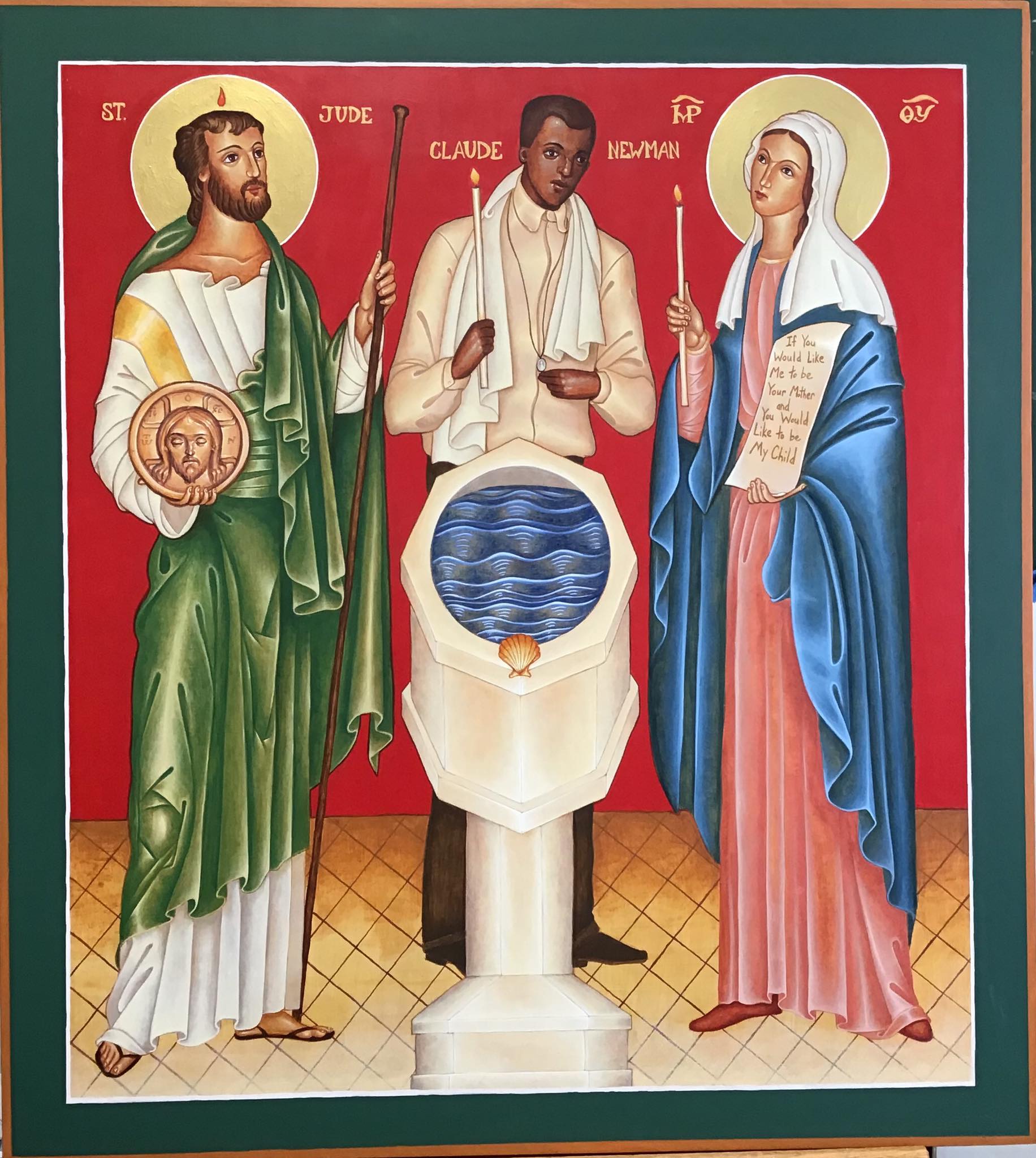
Aspersions were cast on certain versions of Newman’s story in recent years, however, when Ralph Frasca of The New Oxford Review interviewed various sources who knew Fr O’Leary, as well as those familiar with Newman himself. He also spoke with at least one USCCB official, indicating that the alleged apparition may have had some momentum to become officially recognized.
Frasca’s report was published in 2015, claiming that Fr Robert O’Leary had lied about the story in a tape recording decades after Newman’s death, reportedly to make a name for himself before his own passing. (He died in 1984.)
Frasca’s rendering, said to accord with “court records and newspaper accounts,” has a mentally disabled Newman killing Cook after planning a robbery.
“Contrary to Fr. O’Leary’s recording, Claude was not married and did not kill a man who was in the process of committing rape. Instead, Claude robbed and murdered an old man,” Frasca writes.
“After a two-day trial in March 1943, Claude was convicted by a twelve-member jury in Mississippi’s Warren County Circuit Court. It took the jury only twenty minutes to decide the case.”
Unmentioned by Frasca, of course, is the fact that in 1943—well within the bounds of the Jim Crow era—Black Mississippians were not infrequently accused, convicted, jailed, and executed for crimes they almost certainly didn’t commit.
Moreover, due to White terrorism, almost no African Americans in the South were registered to vote at the time, meaning that Newman was almost certainly convicted by an all-White jury.
Frasca admits that certain other elements of the story are not in question, including Newman’s reception of a Miraculous Medal and conversion to Catholicism. Frasca concludes that the latter was not due to an apparition, but he does not mention any of his sources outright denying that this took place or that it was claimed by Newman.
These sources included O’Leary’s own writings, from shortly after Newman’s execution, and the testimony of one of the nuns who catechized the ill-fated inmate. (Another sister had already passed by the time Frasca began his research)
“Sr. Benna never said anything about Marian apparitions,” Frasca notes, before going on to employ a fallacious argument from silence.
The other miraculous element of the traditional story, that of a Newman-hating Hughes being converted himself by another apparition, is refuted on even thinner evidence, relying solely on the testimony of Hughes’ surviving family members. They reportedly knew of “no connection between the two men.”
Frasca again attempts to bolster his argument against the supernatural by appealing to O’Leary’s diary, which apparently makes no mention of either apparition. The matter of the priest’s secret vow, somehow known to Newman by allegedly supernatural means, is not discussed.
Likewise, Frasca notes that local journalists did not report Hughes crying out for a priest in his last moments, ostensibly throwing cold water on the idea that he informed O’Leary of a near-death apparition of Newman and the Blessed Mother.
On the other hand, it doesn’t seem particularly likely that reporters in Mississippi—one of the most Protestant states in the country—would make any concerted effort to highlight a clearly Catholic moment even if it had occurred. (Hughes surely wouldn’t have been the first man to cry out for a cleric in his last moments, anyway.)
Even so, Hughes’ last words are recorded by the media as: “May He have mercy on my soul, in the name of the Father, the Son, and the Holy Ghost.”—a peculiar choice of words in itself, given that the same papers said he was a Pentecostal Protestant.
By the end of his would-be exposé, Frasca’s logic is in full tatters, bringing him to the added conclusion that Newman barely prayed for his fellow prisoners before his death, again based on the fact that O’Leary didn’t write much about it.
In 1945 Fr. O’Leary wrote that on the morning of Claude’s execution, he heard Claude pray, “Please Lord, help the other condemned men here.” This was the extent of Claude’s intercession for other prisoners’ souls.
(Ralph Frasca)
It’s hard not to think there were ulterior motives behind Frasca’s breathless attempt to discredit the story of O’Leary about Newman. His blatant lacunae in matters of law and order in the Jim Crow South cast doubt on his refutations, including a near inexplicable dismissal of the possibility that a Black teenager in 1940s Mississippi might not have been a filthy murderer worthy of the electric chair. Racism of any kind is not mentioned in Frasca’s retelling.
“The real Claude Newman was a killer and thief who repented at the end,” Frasca said, ever so matter-of-factly.
Can we be shocked, though? The New Oxford Review is your typical American Catholic cultural magazine—in just about all the worst ways. (Try this 1986 piece on for size, in which Reaganite conservatism is presented as the bedrock for fulfilling MLK’s vision for racial harmony.)
At the end of the day, there are no canonized African-American Catholics and even Frasca says Newman should have a sainthood cause—though more for holiness than any reputable miracles or apparitions. He would be the second such Black Catholic from the Diocese of Jackson, following Servant of God Thea Bowman. (She became a Catholic two years after Newman’s death.)
Indeed, at this particular juncture of American politics, religion, and jurisprudence, it would seem to be high time to get a few more Black folks on the list for veneration rather than execution.
Our Lady of Vicksburg, pray for us.
Nate Tinner-Williams is co-founder and editor of Black Catholic Messenger, a seminarian with the Josephites, and a ThM student with the Institute for Black Catholic Studies at Xavier University of Louisiana (XULA).


